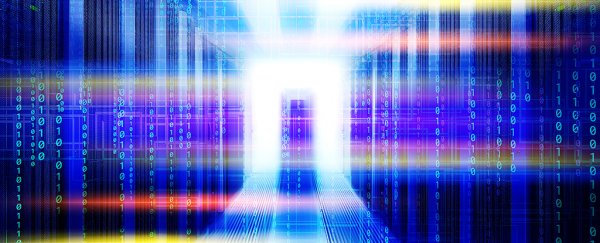Can the origin of life be explained with quantum mechanics? And if so, are there quantum algorithms that could encode life itself?
We're a little closer to finding out the answers to those big questions thanks to new research carried out with an IBM supercomputer.
Encoding behaviours related to self-replication, mutation, interaction between individuals, and (inevitably) death, a newly created quantum algorithm has been used to show that quantum computers can indeed mimic some of the patterns of biology in the real world.
This is still an early proof-of-concept prototype, but it opens the door to diving further into the relationship between quantum mechanics and the origins of life.
The same principles governing quantum physics may even have had a role to play in forming our genetic code.
It's like playing the Sims on a whole new level of physics.
Creating artificial life inside computers has been the subject of many a previous experiment, but current software typically takes a classical, Newtonian approach in producing these models – step by step, with logical progressions.
We know that the real world adds a dab of quantumness to the mix – strange phenomena happening at the micro and macro level – and the new research aims to add that same unpredictability to computer simulations as well.
In other words, the simulations are no longer limited to 1s and 0s, but can introduce some of the randomness we see in everyday life. That promises to open up a whole new field ready to be explored.
"The goal of the proposed model is to reproduce the characteristic processes of Darwinian evolution, adapted to the language of quantum algorithms and quantum computing," write the researchers, from the University of the Basque Country in Spain.
Using the IBM QX4 quantum computer, the researchers coded units of quantum life made up of two qubits (those basic building blocks of quantum physics): one to represent the genotype (the genetic code passed between generations) and one to represent the phenotype (the outward manifestation of that code or the "body").
These units were then programmed to reproduce, mutate, evolve and die, in part using entanglement – just as any real living being would.
Random changes were introduced via rotations of the quantum state to simulate mutation, for example.
The good news is that these actual quantum calculations matched theoretical models the team had come up with back in 2015.
We're still a long way from answering the deepest questions about life, the Universe, and everything – and from actually producing artificial life inside a quantum computer – but this shows it might be possible.
It also fits in neatly with research from the same team published last year, where natural selection, learning and memory were imitated in a theoretical quantum model.
Now that theory has taken the first steps into practical use inside an actual quantum computer.
As with almost everything else in the field of quantum mechanics though, scientists are learning as they go.
The IBM supercomputer used here only partly counts as a full quantum computer, which is currently beyond our technological reach – though these machines are getting more powerful all the time.
"We leave open the question whether the origin of life is genuinely quantum mechanical," explain the researchers.
"What we prove here is that microscopic quantum systems can efficiently encode quantum features and biological behaviours, usually associated with living systems and natural selection."
The research has been published in Scientific Reports.
